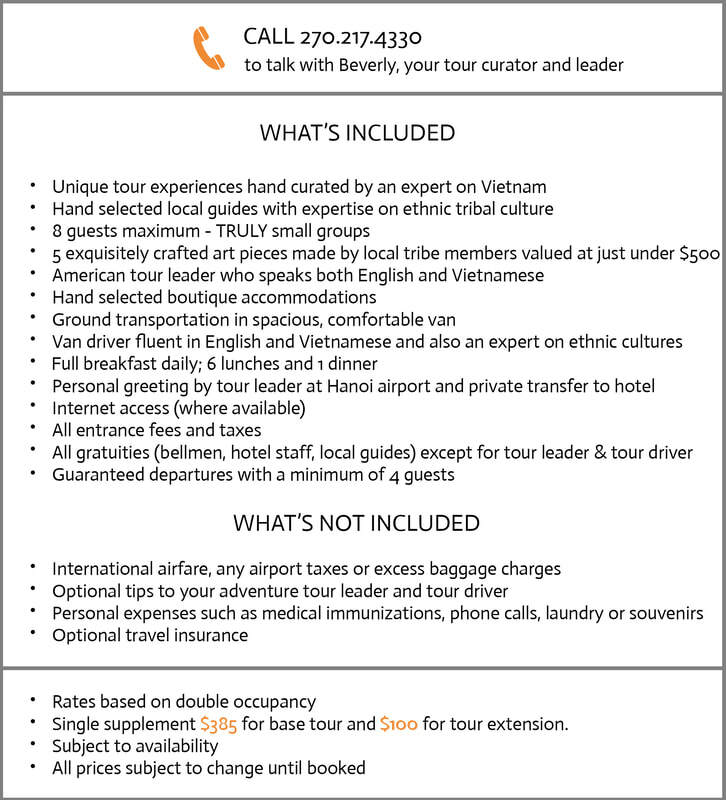Trip Overview
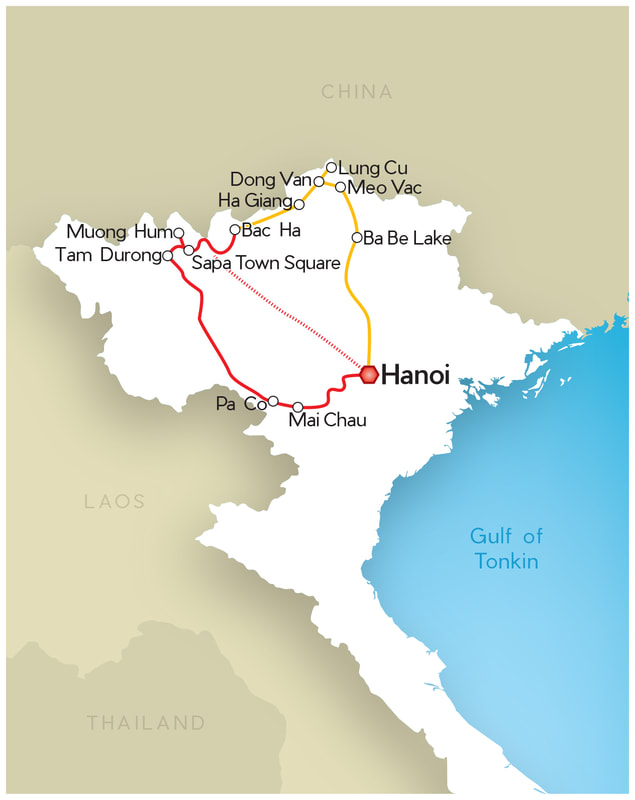
Once upon a time ... this trip description could easily start this way because when you’re on this tour, you'll feel like you are stepping back in time hundreds of years. And the scenery is nothing short of a fairy tale. Amid the stunningly scenic plush mountain territory of North Vietnam along the Chinese borders, we will be visiting 7 of Vietnam’s 54 ethnic tribes. The majority of these tribal groups (referred to as “minorities” by the Vietnamese) still live in traditional rural villages in wood or mud huts and houses on stilts, some still with thatched roofs. Many still wear traditional, brightly colored handmade clothing, unique to each tribe, that are simply exquisite examples of textile art showcasing masterful skills such as embroidery, appliqué and batik among others.
The tapestry of culture is exceedingly rich among these groups. You’ll be mesmerized by their beautiful clothing and hypnotized by the bucolic life of farming and fishing while chickens, ducks, pigs and goats wander free range around every home and even on main roads. You’ll be captivated by their shamanistic spiritual practices and astounded at many of the strange-to-us customs like “wife pulling” where a boy claims a wife by kidnapping a girl to his home where she lives for 3 days and then decides if she’ll stay.
Their lives are likely 180 degrees different from anything you’ve experienced. And, as with all my tours, I’ve developed strong relationships with people in many of these groups so that when you travel with me, you’ll be welcomed with open arms and ushered right into the kitchens where you’ll sit around the fire and learn about these fascinating cultures. And as a bonus, the mountain landscapes in which these groups live is some of the most stunning and unbelievably beautiful in the world. Between the two, I promise you will return with astounding photographs and even better stories.
But the time to come visit these groups is now. Younger generations are eschewing the cultural dress and other tribal traditions as they trade village life for modern life in the bigger cities. In many villages, even the older people are abandoning traditional clothes in favor of western attire which is cheap to buy and easy to wear. Thatched roofs are being replaced by fiberglass and metal ones. Concrete is being favored to traditional wood and mud for walls of homes. The iconic conical hats of Vietnam are giving way to helmets as motorbikes become more plentiful. In short, life is changing quickly there and while no one can begrudge a roof that lasts forever, education instead of toiling in the fields and more rapid transportation, all of this progress means your other-world photo opps are rapidly disappearing. Chose the tour date that works best for you and sign up today so you don’t miss out.
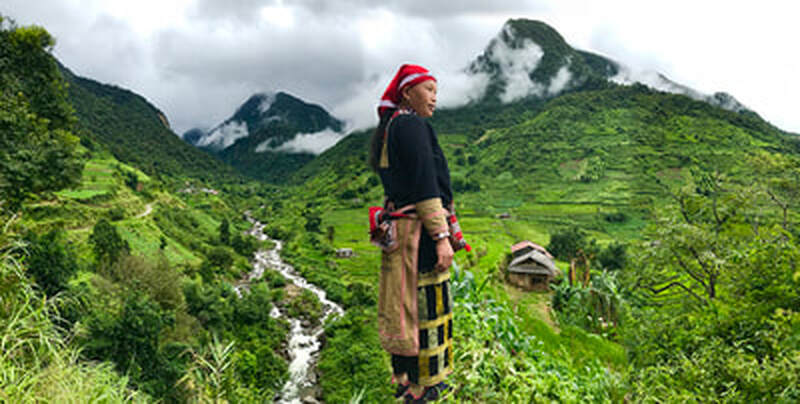
This Red Dao woman, Mon May, is one of my best friends in Vietnam. We discovered this gorgeous location together on one of our days of exploration and we’ll take you there. A few days later, she’ll guide you through her own village and even take you to see the pageantry of a Red Dao wedding!
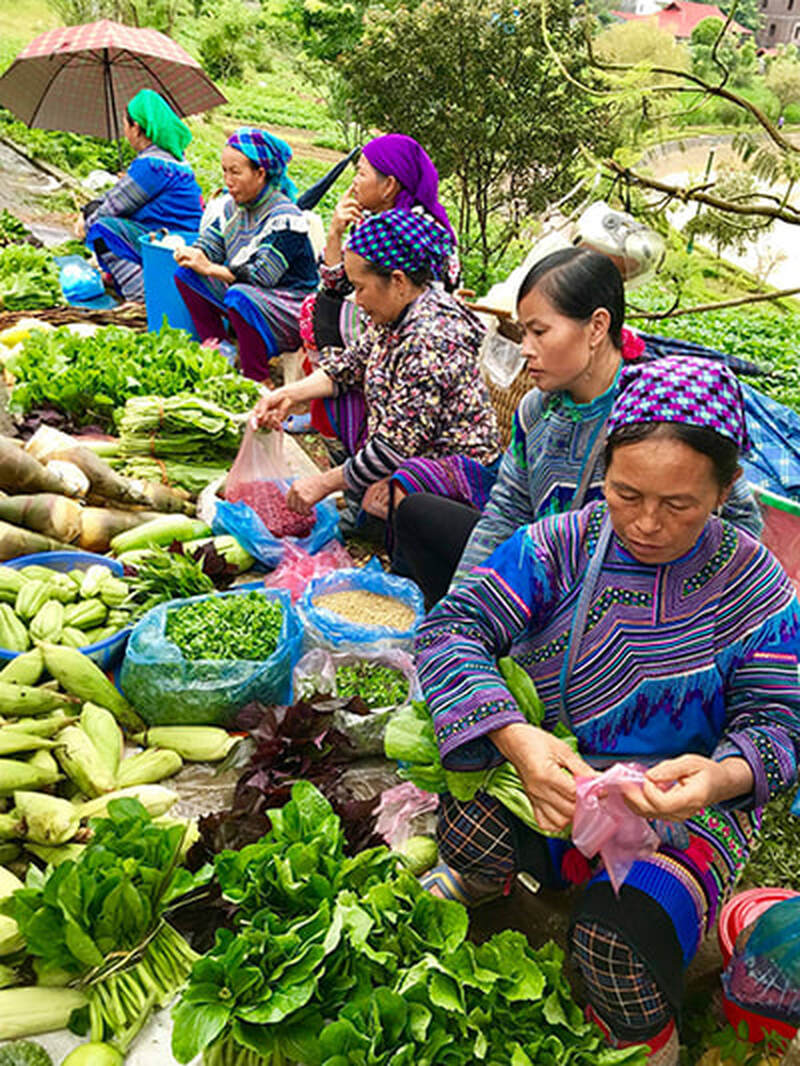
Flower Hmong women named for their bright colored clothing are regulars at the Bac Ha market. Snag photos of them with all the odd-looking fruits and vegetables they sell like the bumpy bitter melon, cone-shaped bamboo shoots and delicious custard apples.
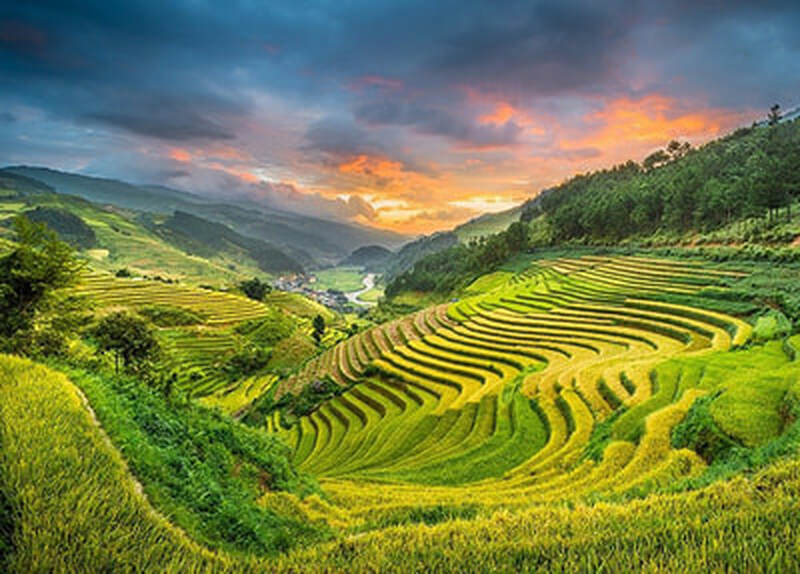
Sa Pa’s rice terraces are iconic for a reason and mesmerizing in all their stages: mirror-like surfaces when newly planted in May, lush and tall all summer long with a green you’ve never seen before in nature and gold when harvest time comes in September.
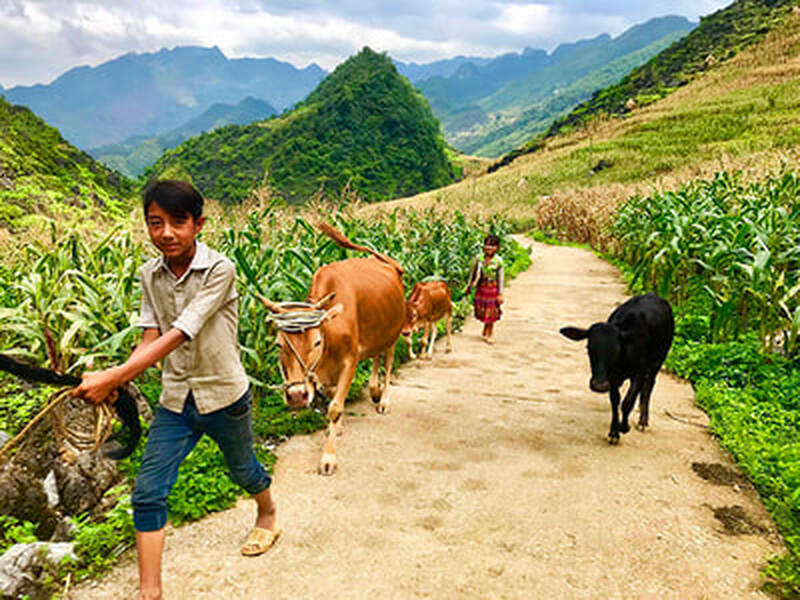
Most of the livestock in Vietnam are free range but are “babysat” by children and the elderly. After grazing all day, these Hmong children are escorting their cattle home to their village high in the mountaintops.
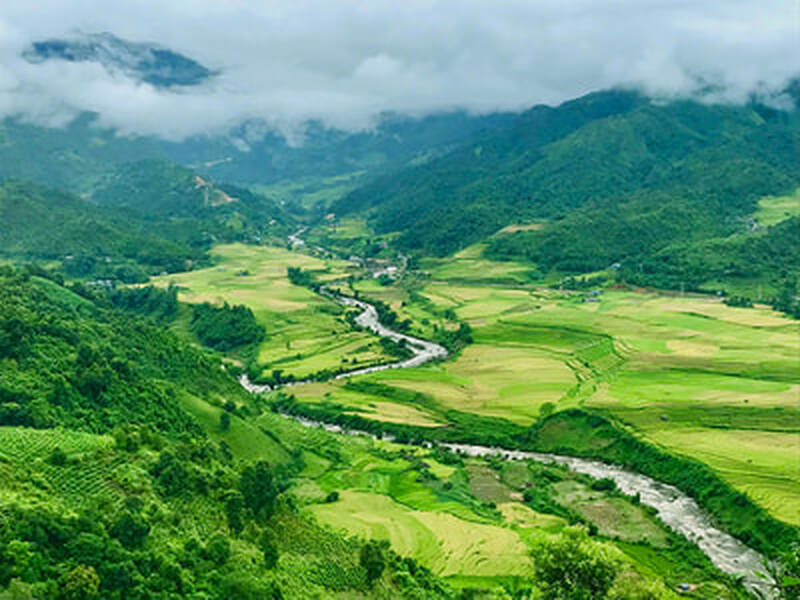
If you join us on the optional tour extension, you’ll get lots of great photos of beautiful scenes like Heaven’s Gate Valley.
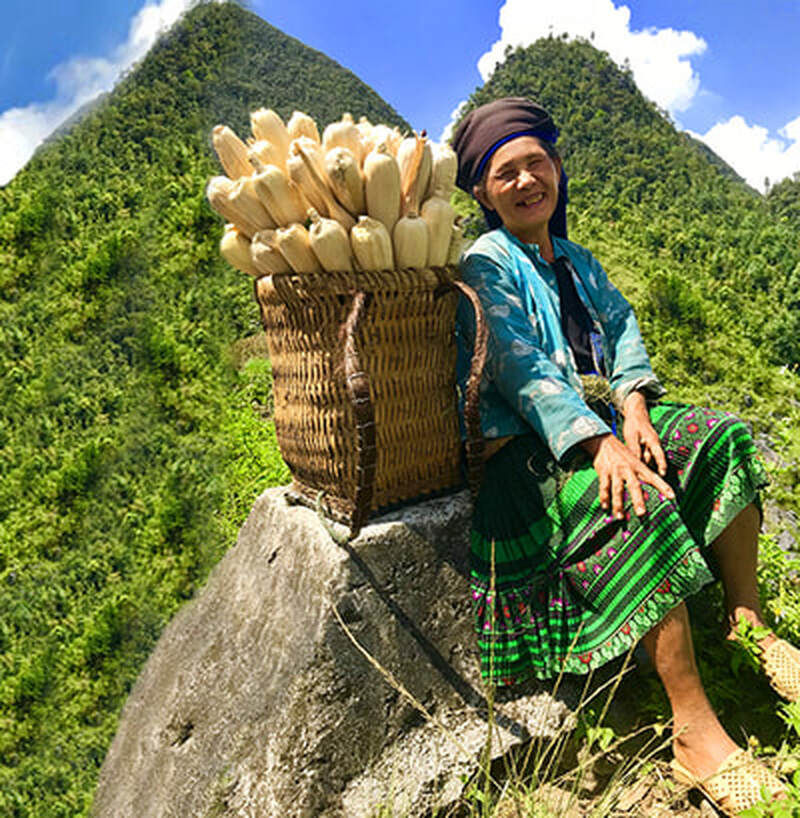
Fall is the season for harvesting corn in North Vietnam. It’s not uncommon to find tribal people of all ages on foot hauling handmade baskets heavy with corn over mountain roads.
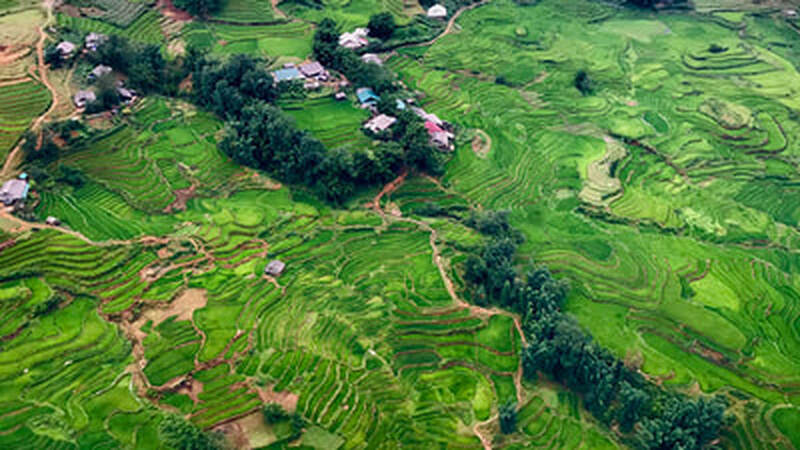
You’ll come home with photos like this during one of the best cable car rides of your life up to the top of Fansipan Mountain, Vietnam’s tallest peak. En route, views of the valley below with it’s lush terraced rice fields abound just before you lift up over the steep, jungle covered mountainside.
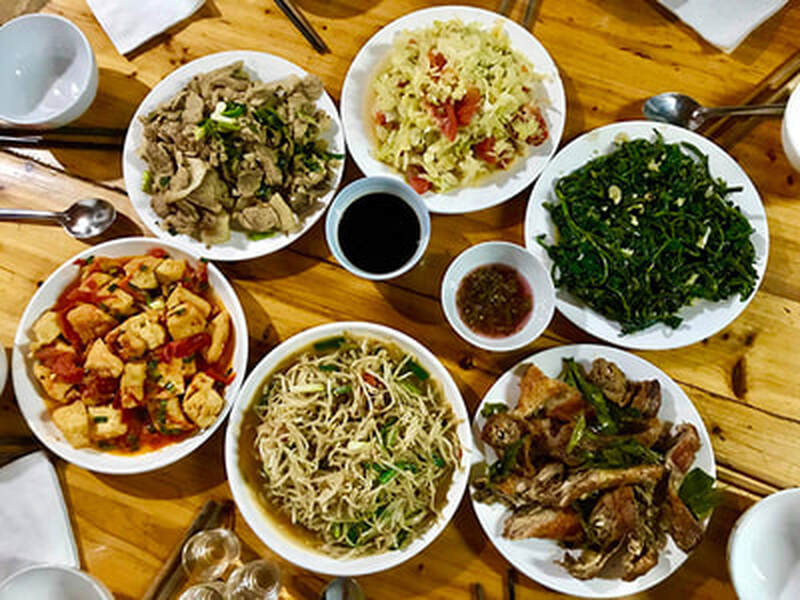
In the ethnic tribal homes we’ll be visiting, meals are served family style often along with rice wine. Dive in to bites of organic duck, pork and chicken with vegetables fresh from the garden.
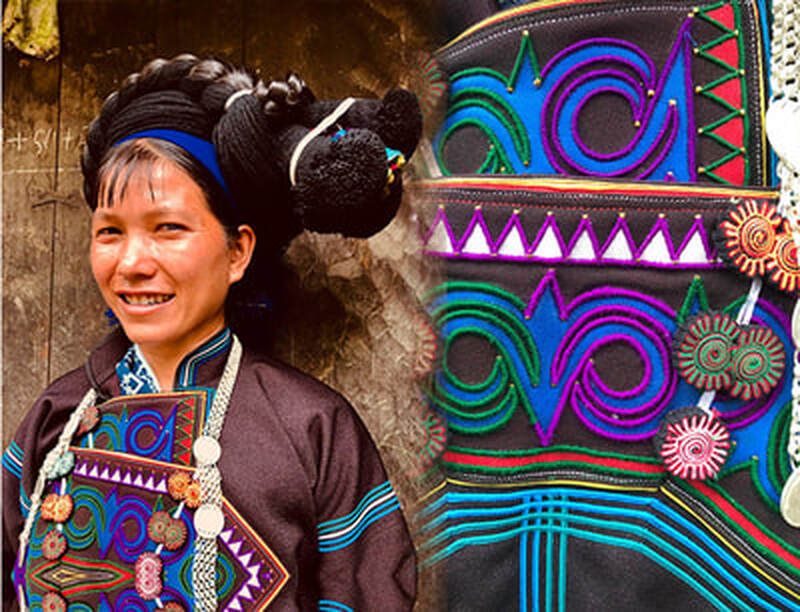
This is my friend San Gio Ba, a Ha Nhi woman who lives in a very tiny traditional village in a “mushroom house,” a special mud hut with thatched roof. She’s wearing the traditional Ha Nhi costume which she made by hand (detail to the right) and her headdress unwinds to 5 feet long!
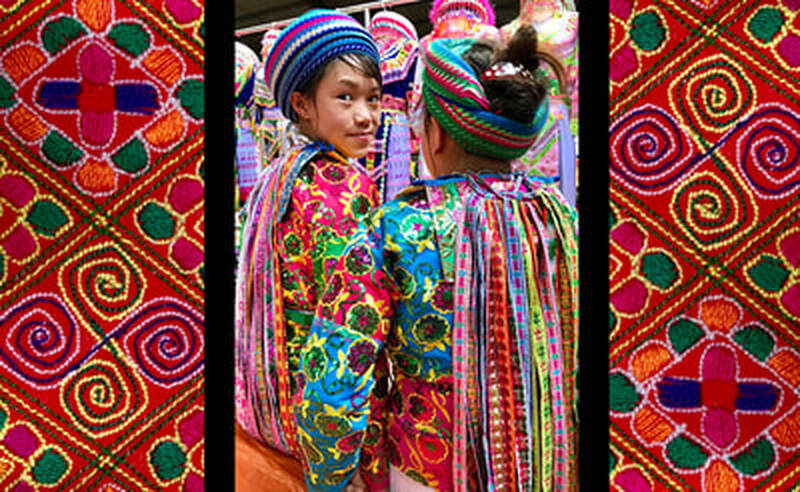
Most of Vietnam’s ethnic tribes can be visually identified by the traditional costume worn by all the females in that tribe. The styles vary from tribe to tribe but not much within each group. The color distinction given to each tribe (for example White Hmong vs Black, Green, Blue and Flower) is derived from a color that, at least at one time, was predominant in the women’s clothing. These girls are White Hmong, so named for the white skirt they wear.
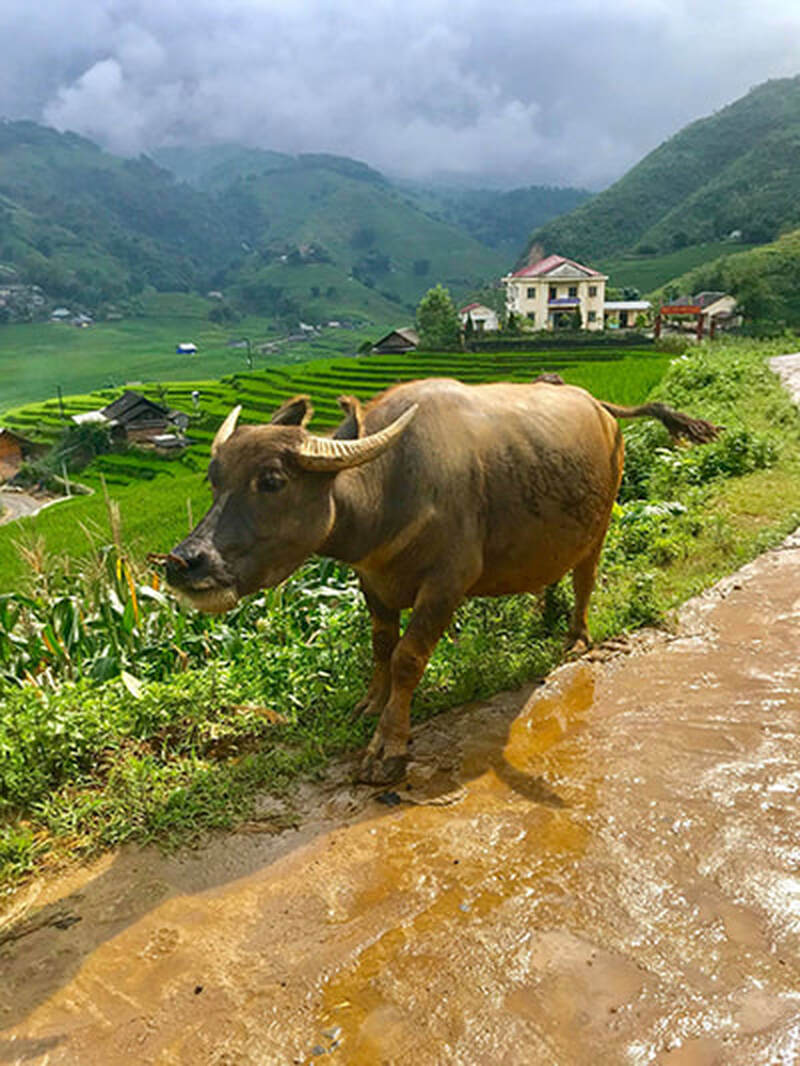
Visiting the Vietnamese countryside is like stepping back in time 100 years in that so much is still done by hand ... or in this case, by buffalo. Water buffalo are ALL OVER Vietnam! You'll definitely see them in the rice paddies and walking along roads like this one and you'll also see small boys riding them. They're free range when they're not working but because they are such prized possessions , the boys "babysit" them so they don't get lost.
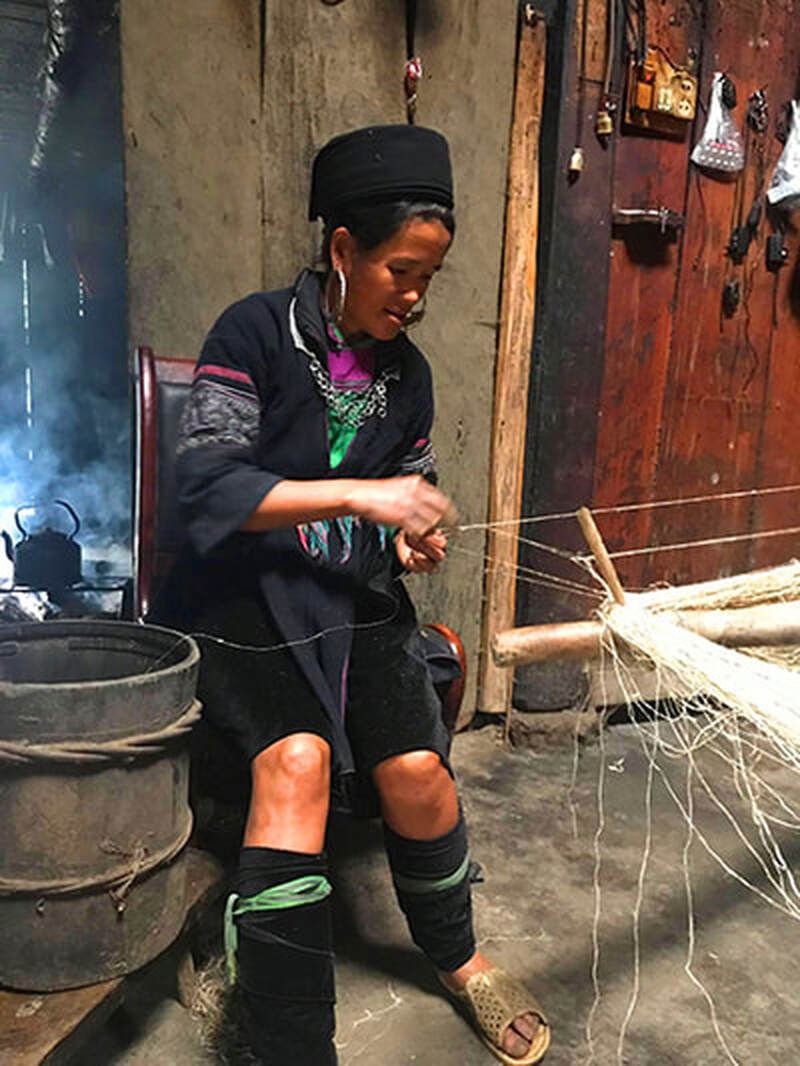
Each year, Hmong women make a new set of clothes entirely by hand from flax. This woman is spinning her flax to prepare for weaving while hot water boils in the kettle behind her for a cup of tea.
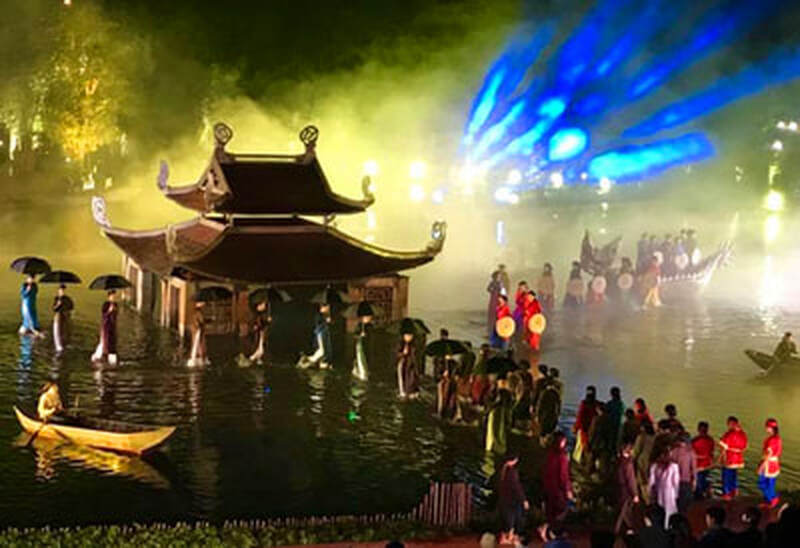
The Quintessence of Tonkin, a spectacular new must-see show in Hanoi, takes place right on a real lake with stages that raise and lower hydraulically so the performers seem to glide on water. Part light show, part ballet, part spectacle, this musical amazement celebrates the ancient culture of North Vietnam ... much of which we’ll see enacted in real life on our tour!
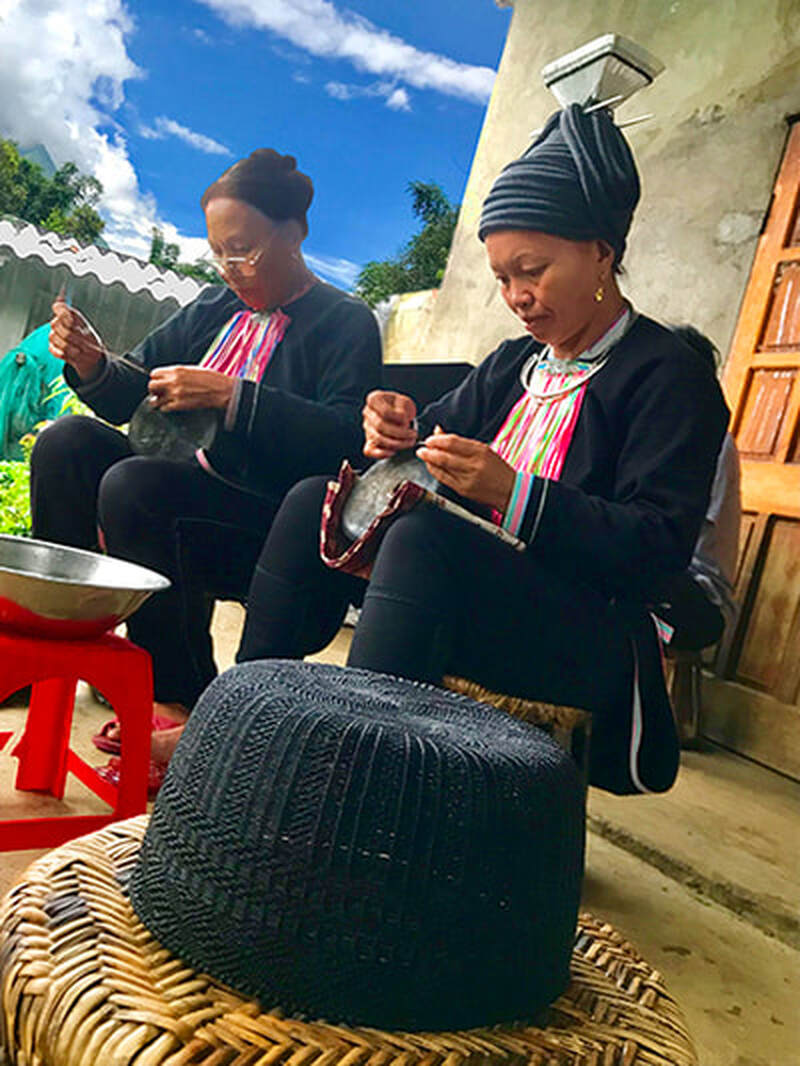
These Dao Dong Van ladies will give us a demonstration of how they make the headgear the woman is wearing as well as the shaman’s hat (in front) which is hand sewn from horsehair.
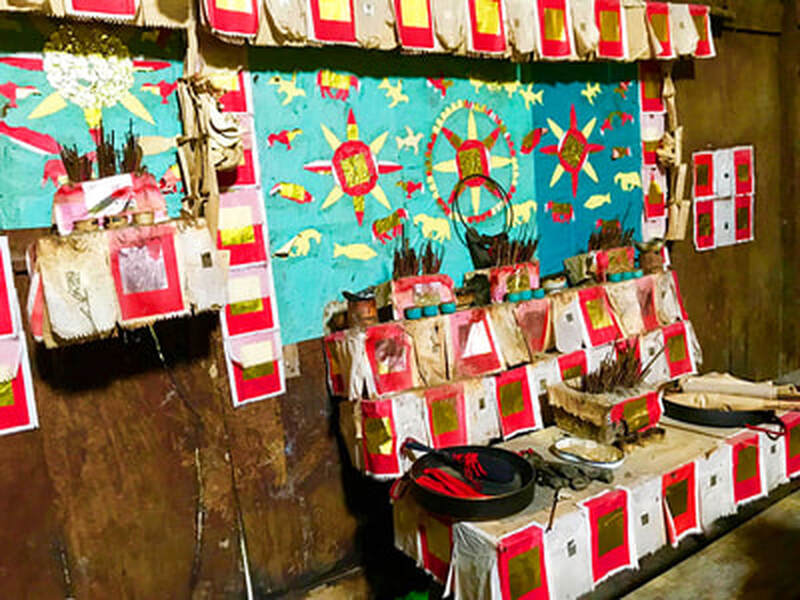
Shamans specialize in soul retrieval. They believe a soul fragment can be lost from fear, depression, trauma, kidnapping by evil spirits, etc. Calling the soul back ranges from different ceremonies in complexity to simple soul callers. This is a shaman’s altar.
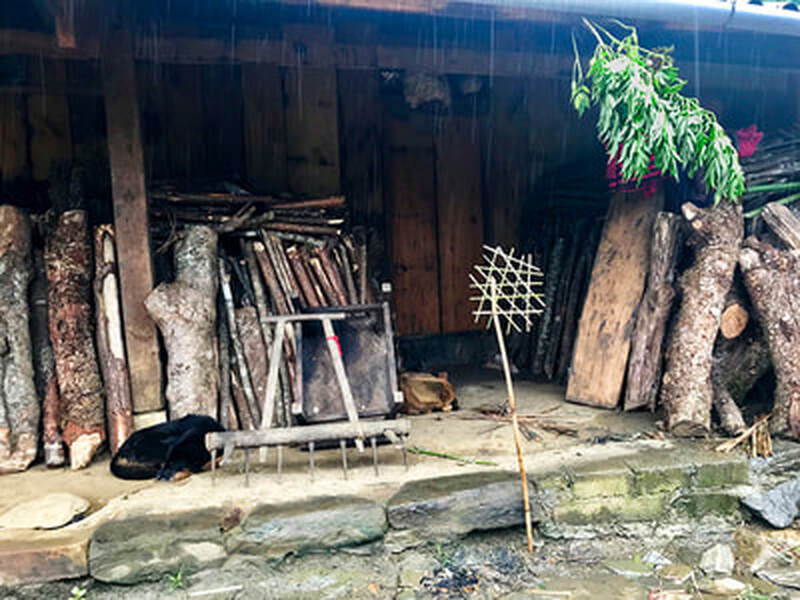
Shamans also heal animals and homes by banishing evil spirits. The green branch indicates that this home has been recently cleansed. Visitors will not be allowed to enter for 3 days at which time the branch will be removed. The bamboo lattice indicates a shaman has healed an animal in that house, most likely livestock.
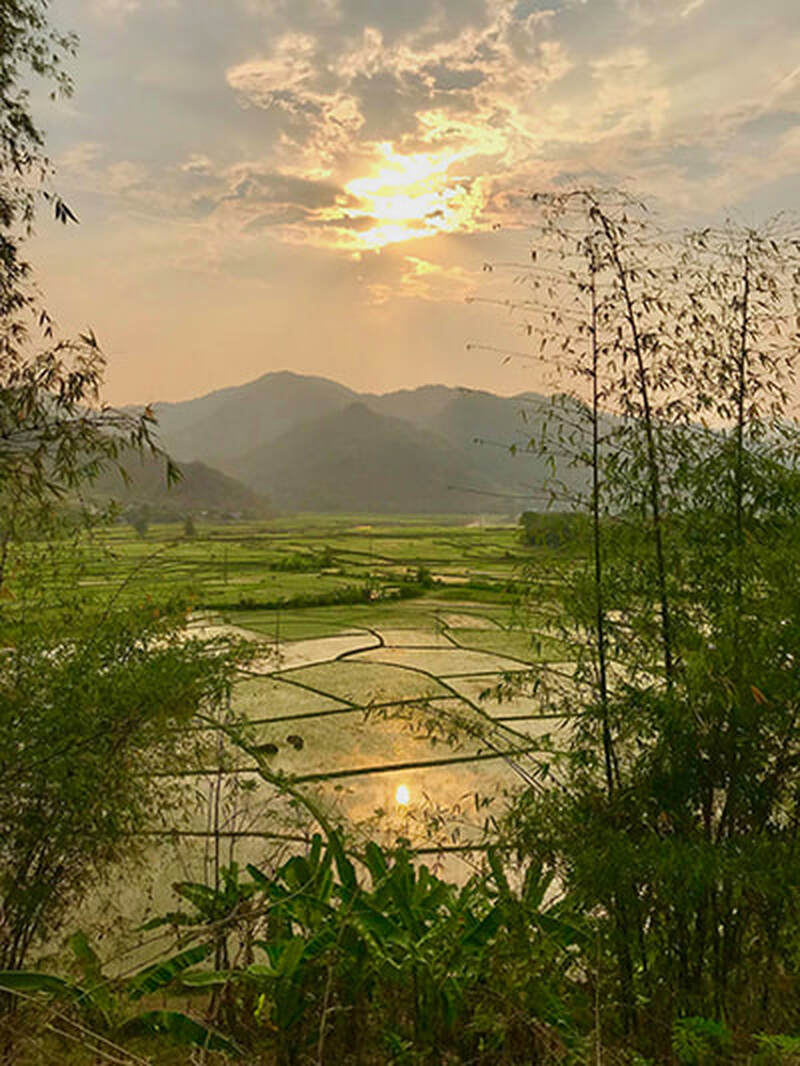
Sunsets on newly planted rice paddies are yet another invitation to slow down your busy life and become one with this little slice of heaven in peaceful Mai Chau.
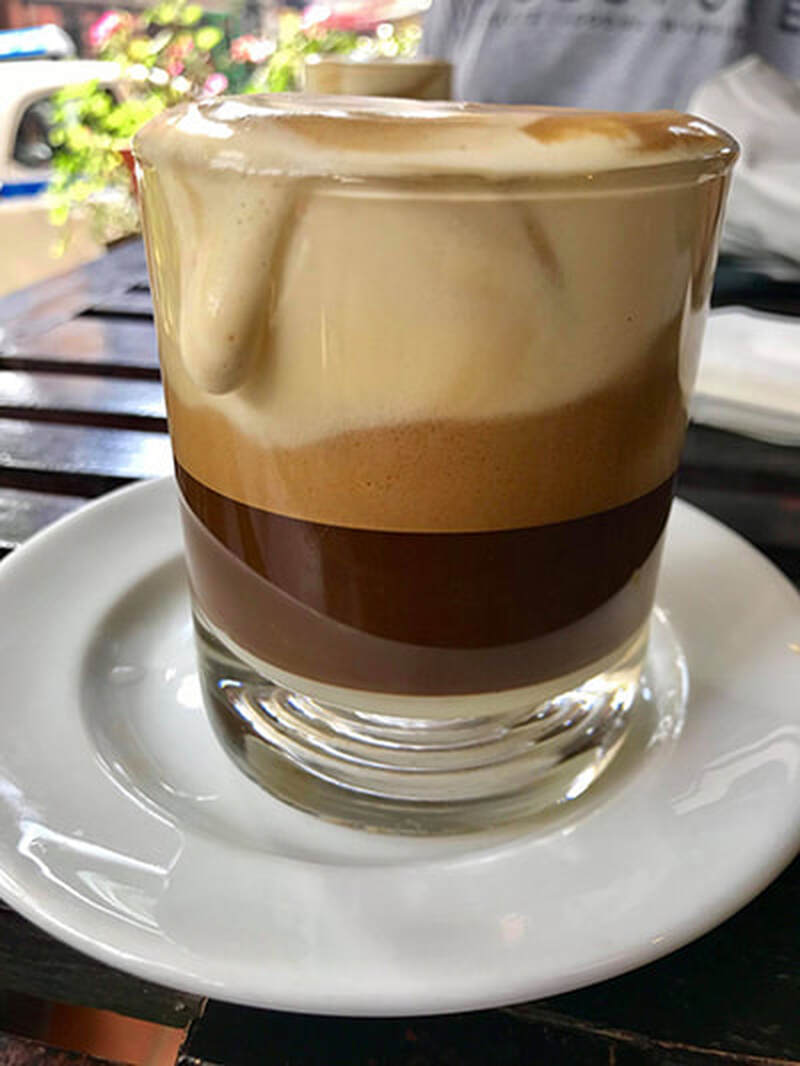
In the 1940s during the French War, milk was a scarce commodity in Vietnam. One improvising man used eggs to create a sweet custard-like concoction to mix with his java to create the feel of rich cream … and egg coffee was born. Although the original was created in Hanoi, I’ll take you for the best I’ve ever had which is in Sa Pa.
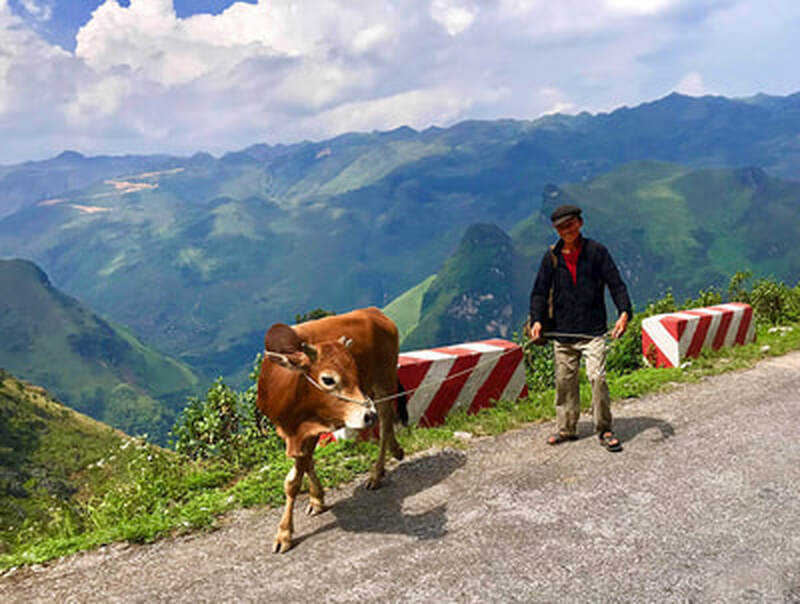
Markets take place on a weekly basis in towns all over north Vietnam. Ethnic tribes travel from their remote mountain villages bringing handmade basketry, medicinal herbs, vegetables and even livestock to sell and trade. The livestock is often walked to market over high mountain passes beginning at midnight in order to arrive by the early 6am start time.
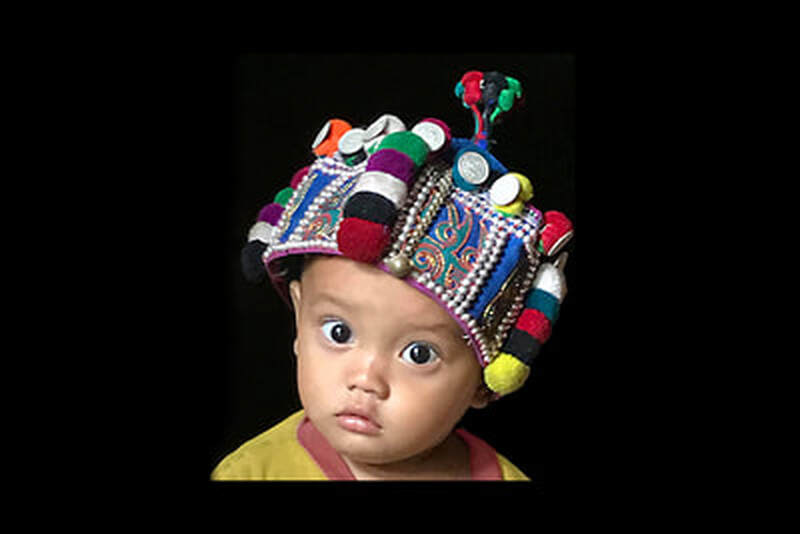
It is the job of the ethnic tribal grandmother to make hats for their grandchildren. These hats keep the children warm in winter, but they also have spiritual significance. Adults believe that the silver on the hats, along with other shaman-blessed talismans, protect the children from evil spirits called “bad wind.” The Ha Nhi tribe makes my favorite hats with George Jetson-esque pompoms on top. You’ll receive one as a gift!
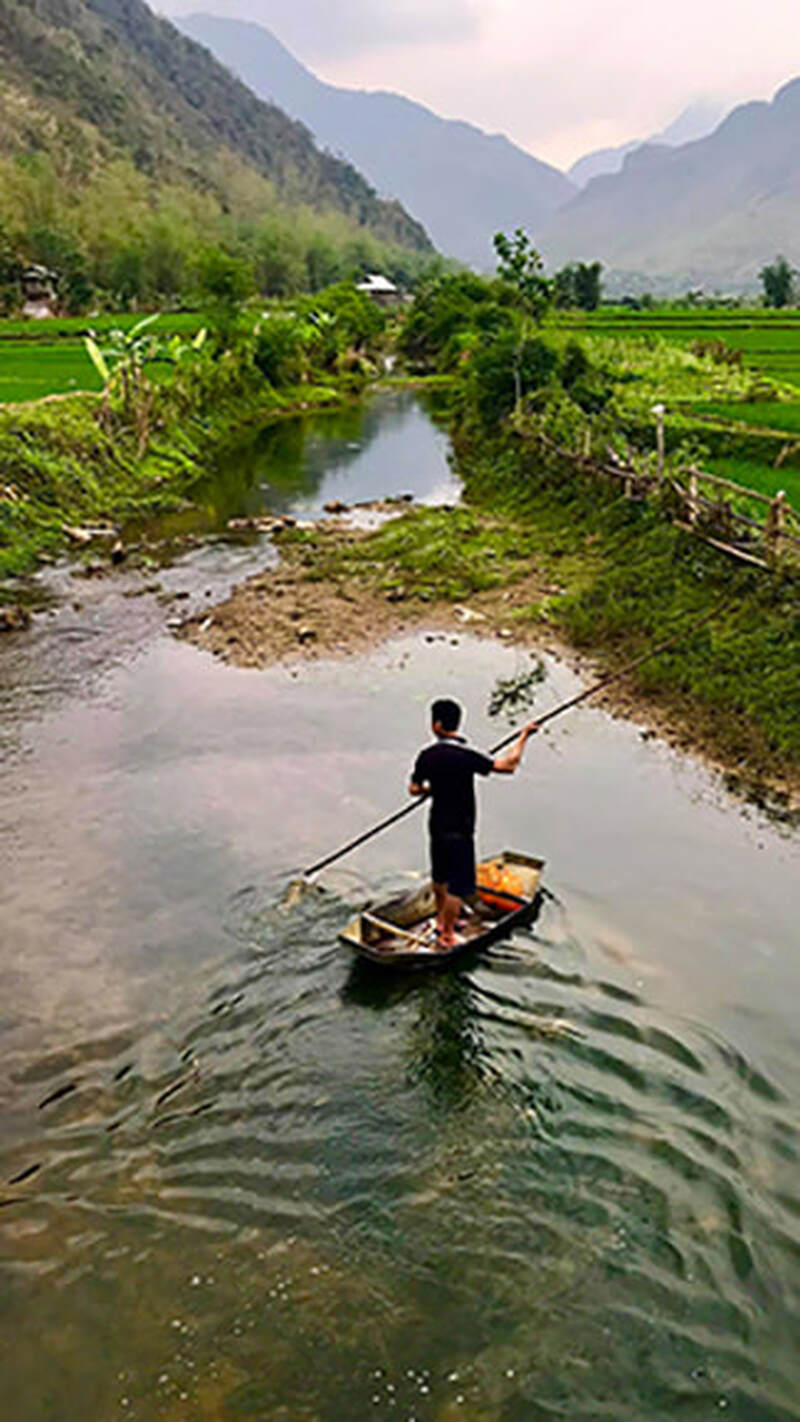
Watching a solitary man fish from a kayak-sized boat in a quiet stream with only the sounds of water babbling and frogs croaking around you is peace on earth. Allow the therapeutically slow pace of life in Mai Chau’s verdant valley
to envelope you and gently wash away your stress.
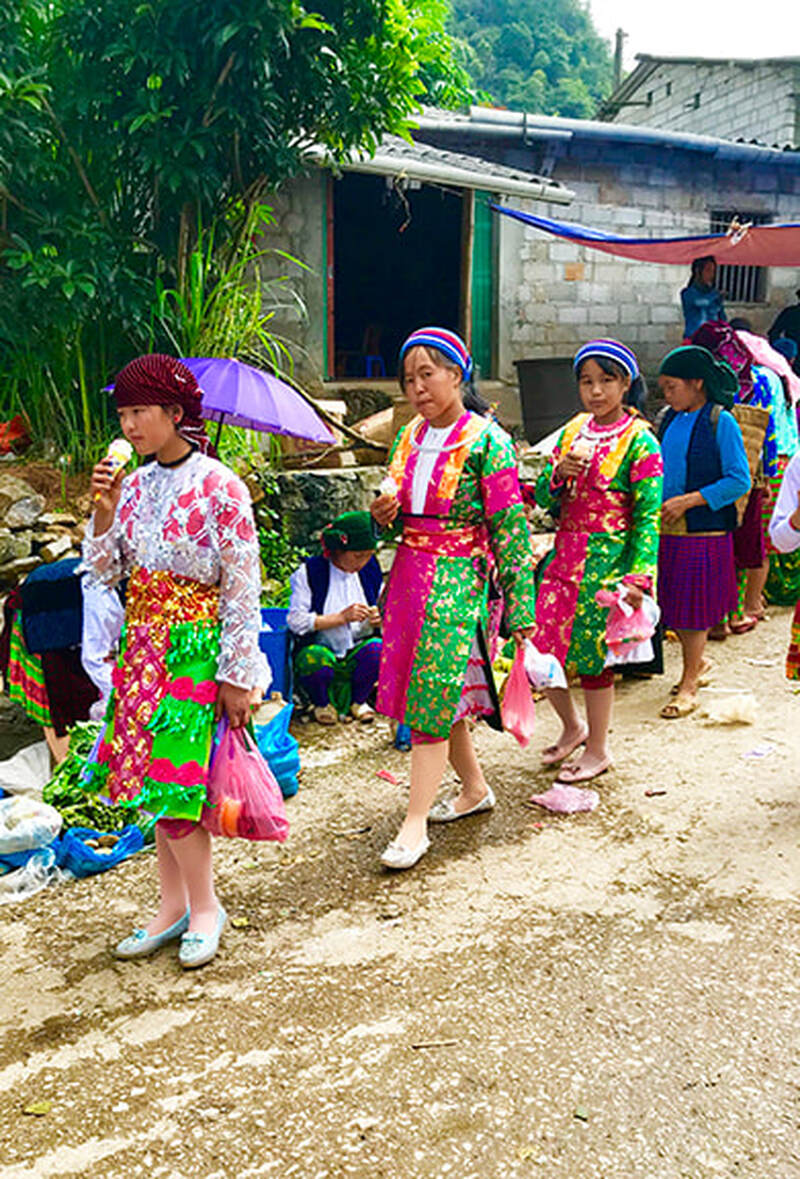
Weekly markets are the tribal equivalent of Saturday night at a club. The new rage among Hmong girls is to put on the bling in the form of sequins and bright shiny colors to catch the attention of prospective husbands.
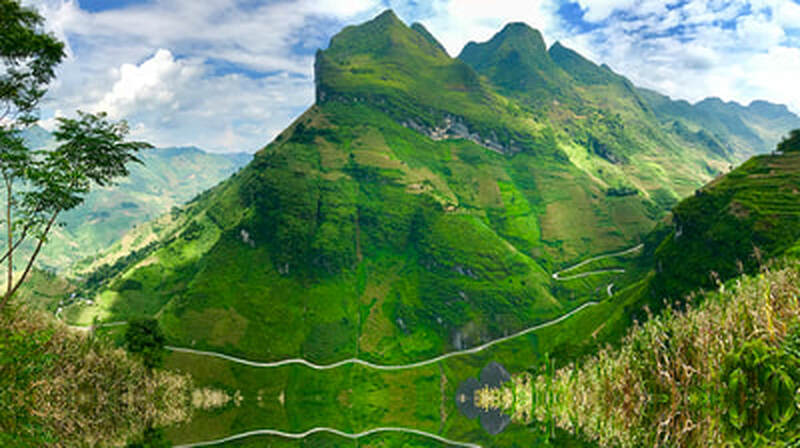
You’ll want to stop every 5 minutes for photos of “ribbon candy roads,” unique mountain peaks and river vistas as we drive over the Ma Pi Leng Pass which has a reputation for being one of the most spectacular drives in the world. It’s hands down the most beautiful in Vietnam. Sign up for the optional tour extension for the views of your life!
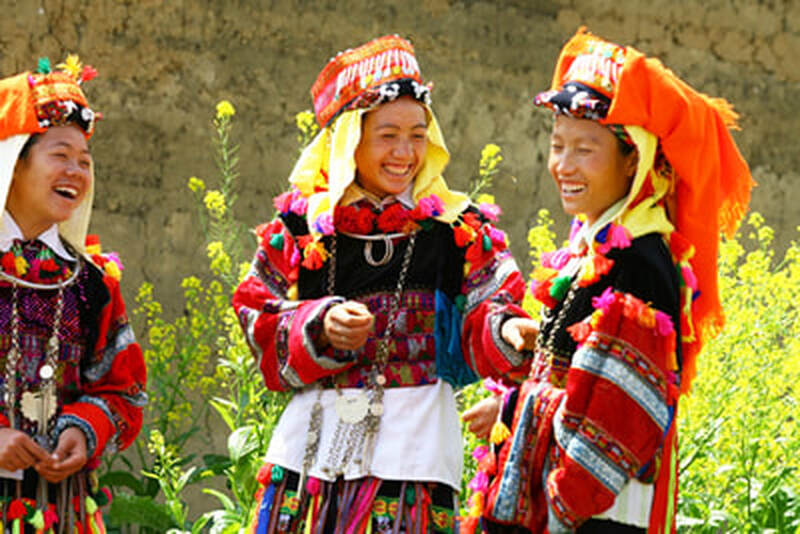
On the extended tour, we visit the Lo Lo tribe renowned throughout Vietnam for having the most beautiful and complex costumes. One set takes 3 years to make so the women only wear them on very special occasions … such as your visit to their village.
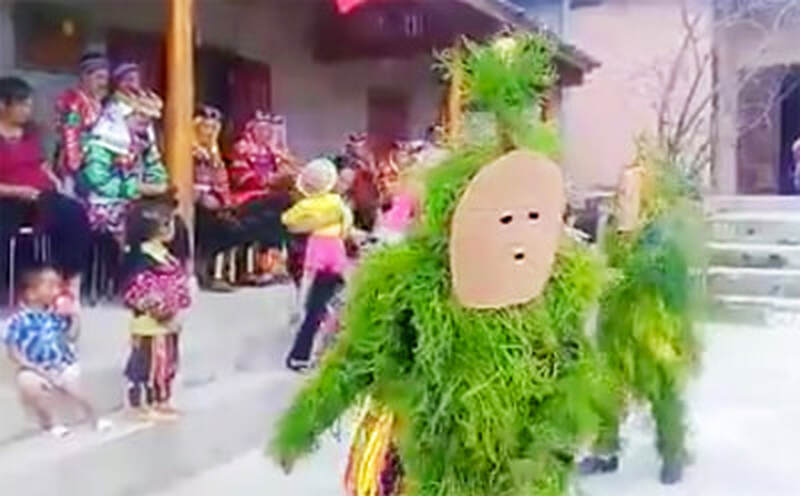
The Lo Lo women aren't the only ones dressed to impress. The men don surreal forest genie costumes once a year when they perform the “Praying for Rain” ceremonial dance. This dance will be specially performed solely for our group! Sign up for the extended tour for this trip highlight.
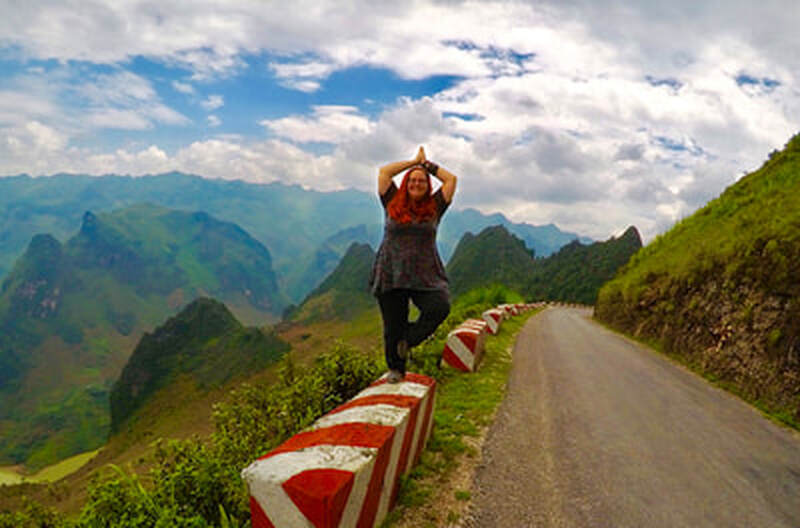
The views on the Ma Pi Leng Pass inspired me to become one with nature in a yogic tree pose. What will it inspire you to do?
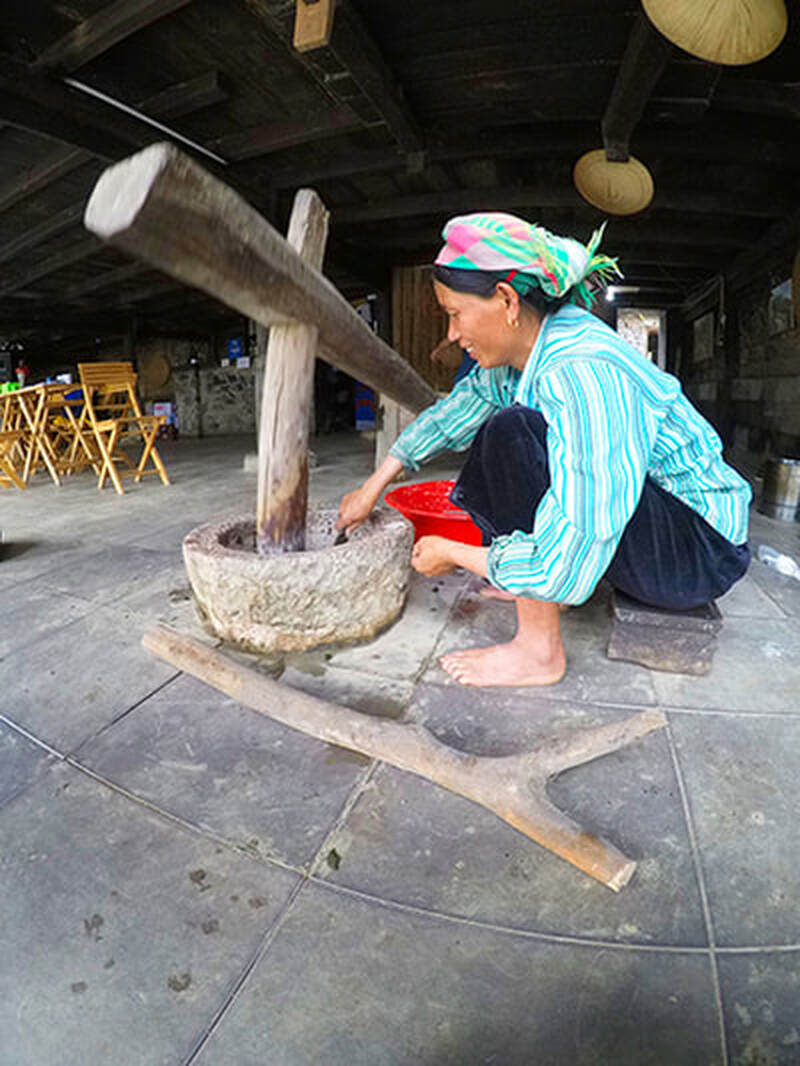
Another hidden gem up my sleeve on the extended tour is a 300 year old Giay house with a 15 foot long mortar and pestle! It’s operated by someone stepping on and off the other end to activate the mortar. I helped these ladies make bread with this medieval device!
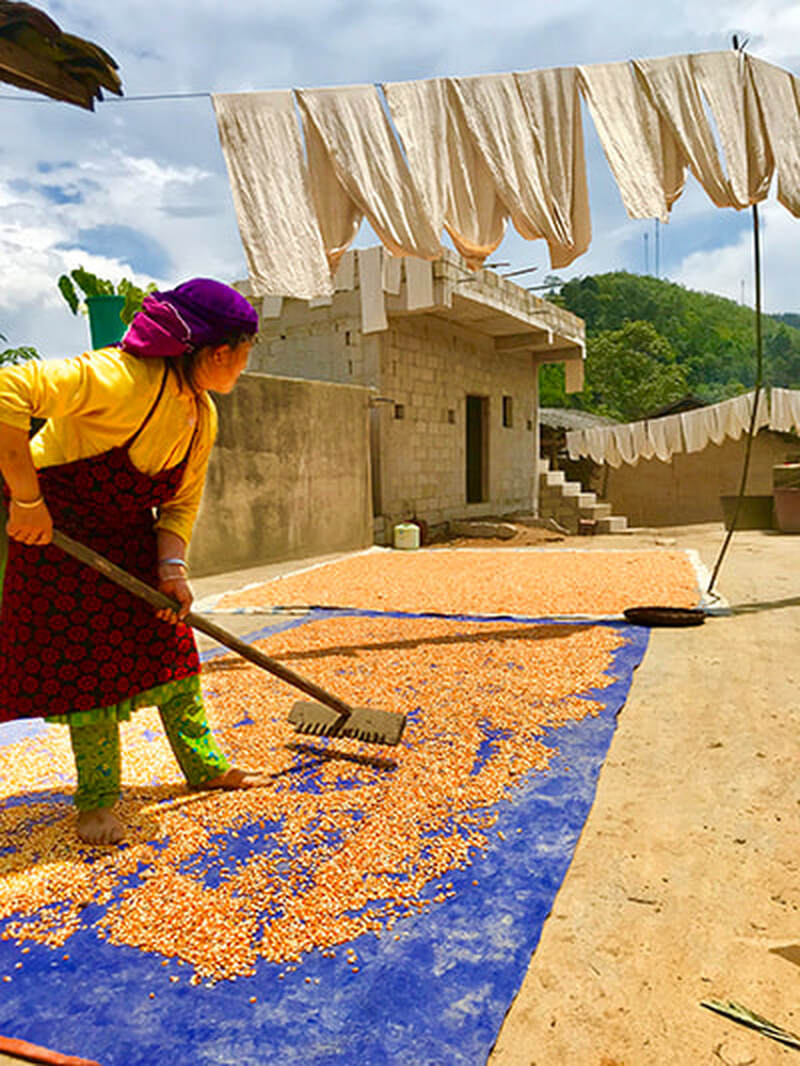
August and September are harvest seasons for corn and rice. The women also weave new fabric for clothes. Here both the corn and new fabrics are laid/hung out to dry.

Some turns in the Ma Pi Leng Pass are such hairpins you can capture the road behind and ahead in one panoramic shot giving you a full sense of the beauty on this drive. But it’s perfectly safe - wide enough for 2 vehicles abreast and guardrails all along. So the only breath-holding you’ll be doing will be due entirely to these spectacular views.
UPCOMING DEPARTURES
Itinerary (tap each tab for expanded itinerary)
Itinerary for Optional Tour Extension




